A Texan Abroad: Jolly Ole England
When a man is tired of London, he is tired of life; for there is in London all that life can afford.
Samuel Johnson
A Note to Readers: What follows is the first in a three-part series on my recent trip to Europe—a delayed celebration of thirty-five years of marriage. For some, these “A Texan Abroad” articles will come across as being invited to sit through my vacation slides. If that’s you, feel free to excuse yourself, new Texcentric content is coming soon. For others who would like to visit Europe, this miniseries might give you ideas for your own future travel plans. Either way, I’m grateful for the attention you give to anything I scratch out. God bless you and Texas.
The plane took off on a Thursday and landed on a Friday. Early June. Haggard and worn, we popped up from the Underground like two prairie dogs in the heart of East London, the lair of Jack the Ripper. A short walk to our hotel, a quaint abode built in 1724, nestled down a cobblestone side street—just the kind of alleyway bloody Jack plied his bloody trade. Finding our room unready, we rested in the Batty Langley’s library with a spot of proper British tea and biscuits. A splash of cold water and primed to stretch our legs, we set our feet to our first adventure—a walking tour of London.
Our guide, a lovely woman who loved to walk and talk, took us on a brisk romp though the center of the city: Big Ben and the House of Parliament, the London Eye and the River Thames, Tower Bridge and the Tower of London, Westminster Abby and Churchill’s War Rooms. After a lunch of fish and chips, in a building built by the grandson of Charles Dickens, it was on to St. James’s Park and Buckingham Palace. King Charles II was not at home. Foot-worn, limb-lagged, and sleep-deprived, we decided to cut our tour short. Hailing a taxi, we drove back to our hotel and bid our guide a fond farewell.


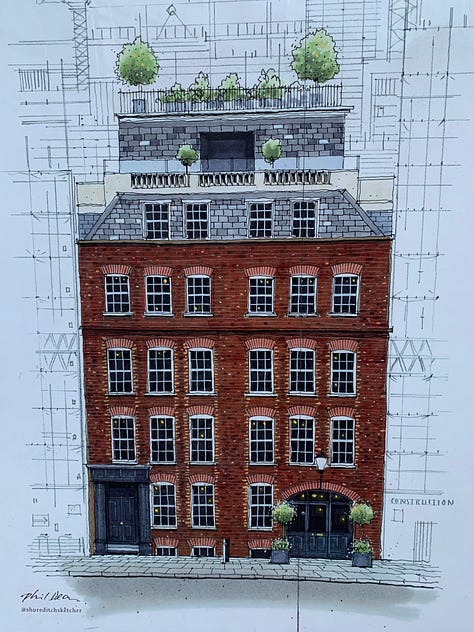

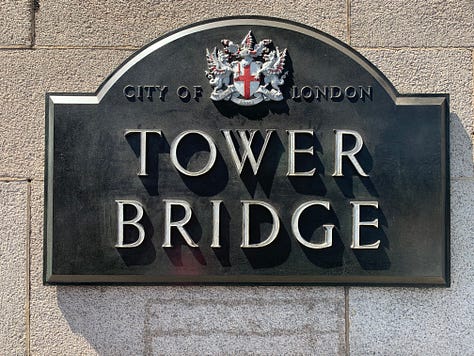




Day dawned early on our second day. It was a day of modern and medieval history. Kensington Palace was the site of an exhibition of modern costumes—“Crown to Couture.” It might as well have been “Crown to Crap.” I flew from Texas to England to see history older than the United States, not to gawk at Beyoncé’s baby-bumped golden gown and halo-like crown from the Met Gala standing in front of the king’s throne.
Leaving Beyoncé, her excess and girth behind, we traveled back in time to another round bellied personality known for his excesses. This one a royal: King Henry VIII. Stepping on the grounds of Hampton Court was like stepping into Medieval World from the 1973 film West World. In the kitchen, the king’s cooks were roasting beefed meat on a spit over an open fire in a walk-in fireplace. We eavesdropped on Henry’s Privy Counsel discussing his marriage to Catherine of Aragon and debating whether he could annul his marriage and wed Anne Boleyn. The decision about this affair of the heart had profound consequences not only for Catherine (who would soon no longer be Queen of England) but also for Anne (who would become queen and then lose her head).The decision made in that room some five hundred years ago also changed the religious sentiments of the nation. With the stroke of a pen, every Englishman, woman, and child were no longer Catholic. They were now Protestant Anglicans. And the religious wars that cleaved Europe for the centuries to follow found their roots in the Privy Chamber at Hampton Court.






Day three found us traveling further back in time. We made a brief stop over in the early nineteenth century and the world of Jane Austen with a visit to the center celebrating her life and legacy in Bath. For a woman who wrote so elegantly and eloquently about romance it is quiet remarkable that she, herself, had so little intimate knowledge with such human connection. And yet, her Mr. Darcy has captivated the heart of my beloved. My saving grace: he is but a character in a book.
After morning tea with Miss Austen, we took the Roman baths—the wondrous first-century complex of hot baths, saunas, and exercise rooms built by Roman army engineers around a natural hot spring. Eighteen hundred years later, during Miss Austen’s time, the baths were a favorite holiday spot for wealthy Londoners. Others swore by the healing powers of the hot spring and the health-producing properties of its mineral water. Having sampled the waters at Bath, I can attest: If you drink enough of Bath’s water, it will cure you of every illness known to man because it will either kill you or you will want to kill yourself.








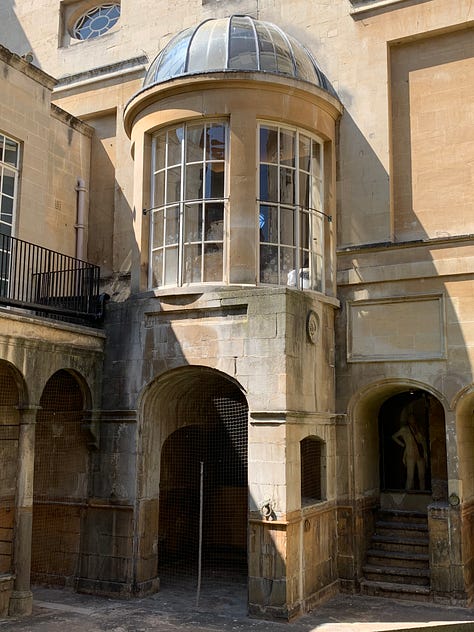
Day four found us on a train to Queen Elizabeth II’s favorite English castle: Windsor. Its stately halls and exquisite rooms filled me with Americanized thoughts about English nobs and the splendor of their estates and palaces while English nobodies lived in squaller, gilding the halls of Windsor through the strength of their backs and the calluses of their hands. But such thoughts are foolish. I’m not English. Why should I pass judgment on places like Windsor which were built by freemen while the stately hall of our White House and Capitol were built by bondsmen? Truly, Britons hold Windsor dear to their heart. And they should, it’s a national treasure. When Queen Victoria’s private chapel caught fire on the evening of November 20, 1992, spreading through more than a hundred rooms, the citizens of the village rushed the castle and saved irreplaceable valuables.
Down the hill from Windsor Castle sits St. George’s Chapel, the birthplace of British heraldry. King Edward III founded the Order of the Garter there in 1348. St. George’s is also the final resting place of Queen Elizabeth II and Prince Philip.
The afternoon found us back in London, walking among the artifacts, placards, and displays in the Imperial War Museum. The day ended on a Texas note, with a visit to where the Republic of Texas Legation was once housed at No. 4 St. James’s Street.


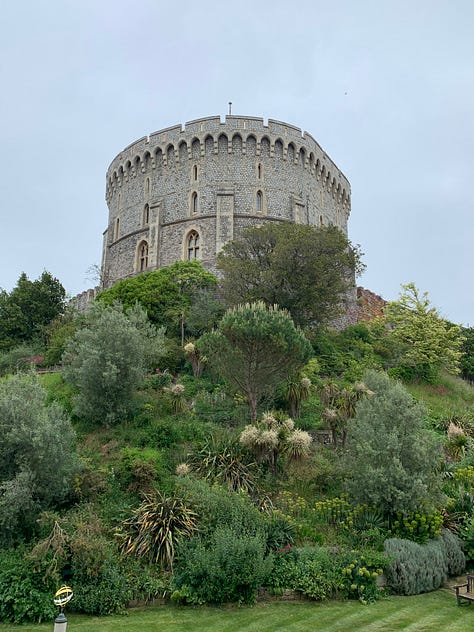





Day five, June 6, did not find us in Normandy—that would come later. Rather, this historic day found us in the Cabinet War Rooms (better known as Churchill’s War Rooms), the underground bunker in the basement of the the War Department where Winston Churchill oversaw the war effort. “This is the room from which I will direct the war,” he declared after becoming Prime Minster in May 1940. A Churchill devotee, this was a highlight. The War Rooms not only provided a convenient, though crowded, place to work, portions of it demonstrated the humor and indomitable spirit of the British and their Prime Minister during some of the most trying times for this island empire. In the main corridor is a weather indicator where placards such as Sunny or Shower were displayed to let those underground known what was happening above ground. During the bombing of London, if it was particularly heavy, the placard read: Windy.
That afternoon we boarded another train, this one bound for Oxford with its near millennial old colleges. I desired a visit to the Eagle and Child to drink a toast to the dons C. S. Lewis and J. R. R. Tolkien and the other Inklings but found it closed. A friend told me later it had been shuttered during the Covid shutdown. But a peek inside was as I imagined: green walls with dark wooden paneling and floors. Just the kind of comfortable place a writer could find a stiffening drink, a peaceful pipe, and stimulating conversation. It was a place a writer could call home.
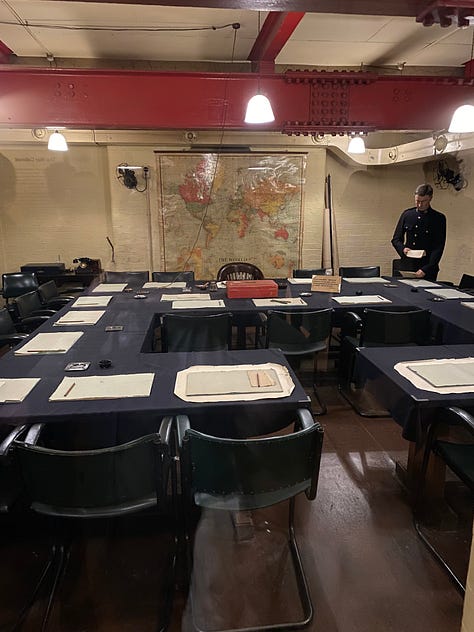
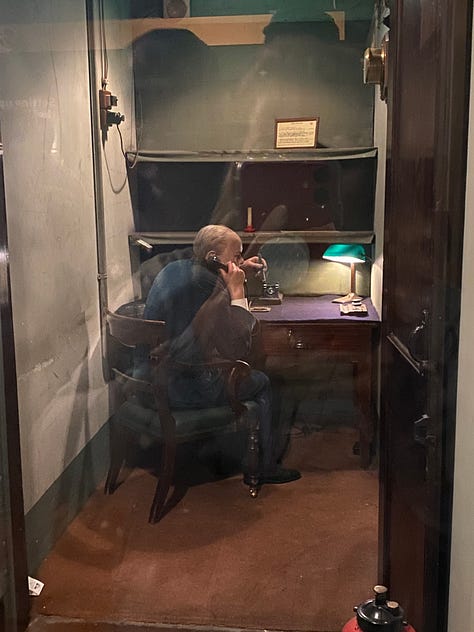




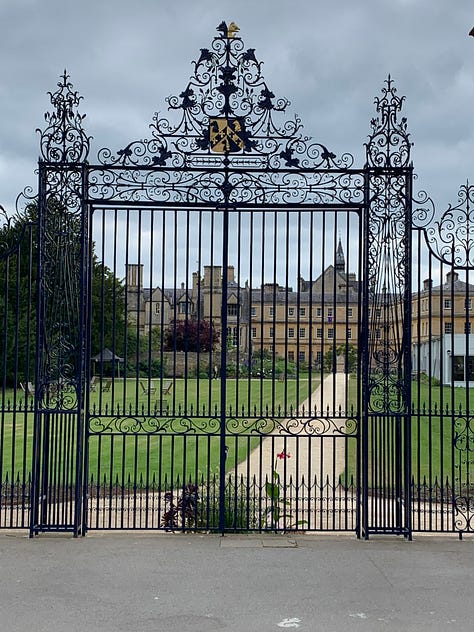


Day six, our last in London, found us wandering the grounds of the Tower of London, gazing in gaggled wonder at the Crown Jewels, and walking among the royal and notable dead in Westminster Abbey.


We bid farewell to jolly ole England on day seven. We took the Euro from London to Paris, passing under the English Channel and emerging among the verdant hills of the French countryside.
Pondering the time we spent in London and its surrounding environs, this Texan who loves wide-open spaces is left with the same sentiment Charlotte Brontë expressed in her 1853 novel Villette: “I like the spirit of this great London which I feel around me.”




I agree, Michael. London is a wonderful city. I’m glad you enjoyed the slideshow, and found some new places to see.
London is a great city to visit. You gave me some great ideas for places to visit when we go back someday.